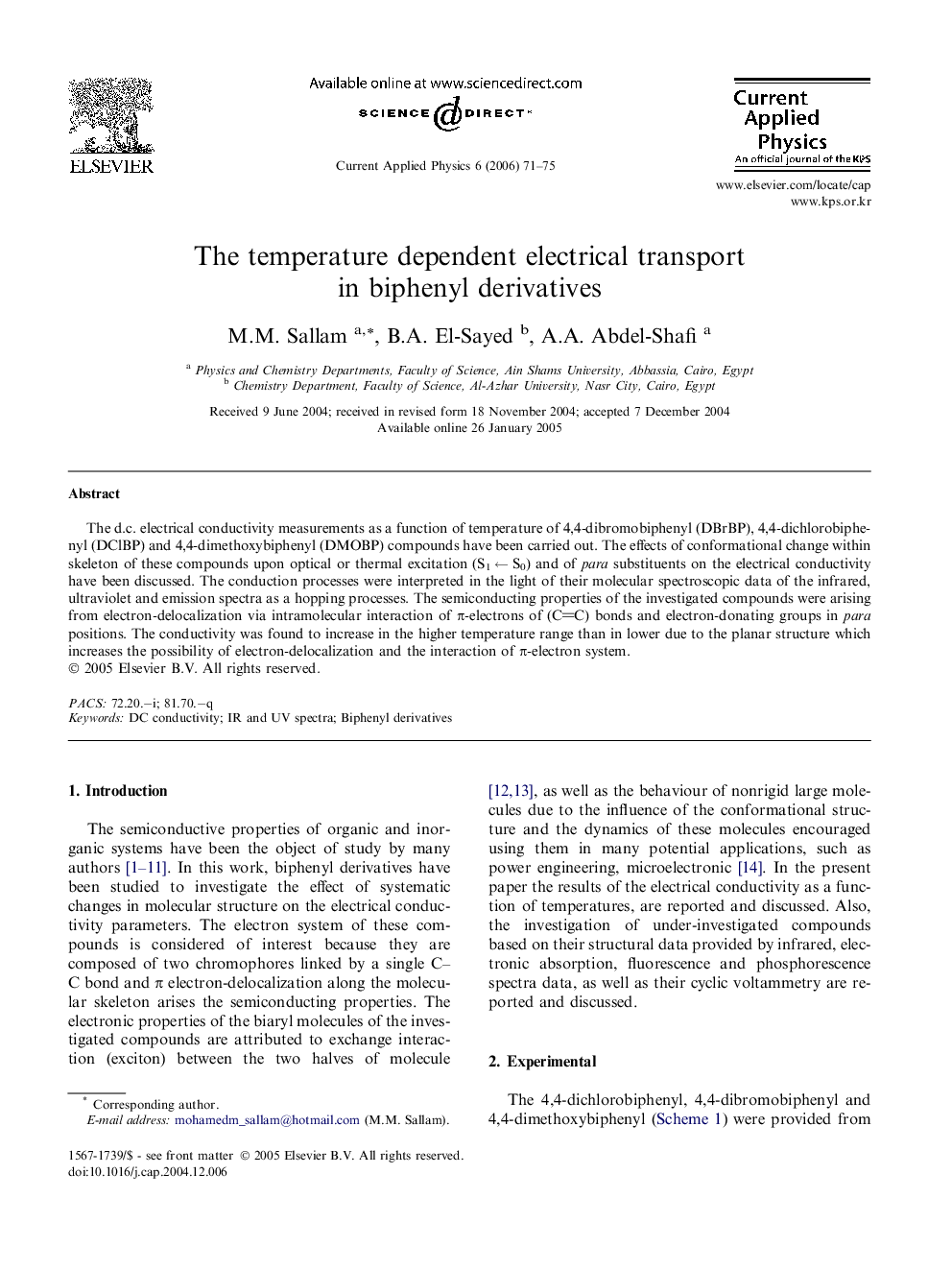| Article ID | Journal | Published Year | Pages | File Type |
|---|---|---|---|---|
| 1788576 | Current Applied Physics | 2006 | 5 Pages |
The d.c. electrical conductivity measurements as a function of temperature of 4,4-dibromobiphenyl (DBrBP), 4,4-dichlorobiphenyl (DClBP) and 4,4-dimethoxybiphenyl (DMOBP) compounds have been carried out. The effects of conformational change within skeleton of these compounds upon optical or thermal excitation (S1 ← S0) and of para substituents on the electrical conductivity have been discussed. The conduction processes were interpreted in the light of their molecular spectroscopic data of the infrared, ultraviolet and emission spectra as a hopping processes. The semiconducting properties of the investigated compounds were arising from electron-delocalization via intramolecular interaction of π-electrons of (CC) bonds and electron-donating groups in para positions. The conductivity was found to increase in the higher temperature range than in lower due to the planar structure which increases the possibility of electron-delocalization and the interaction of π-electron system.
